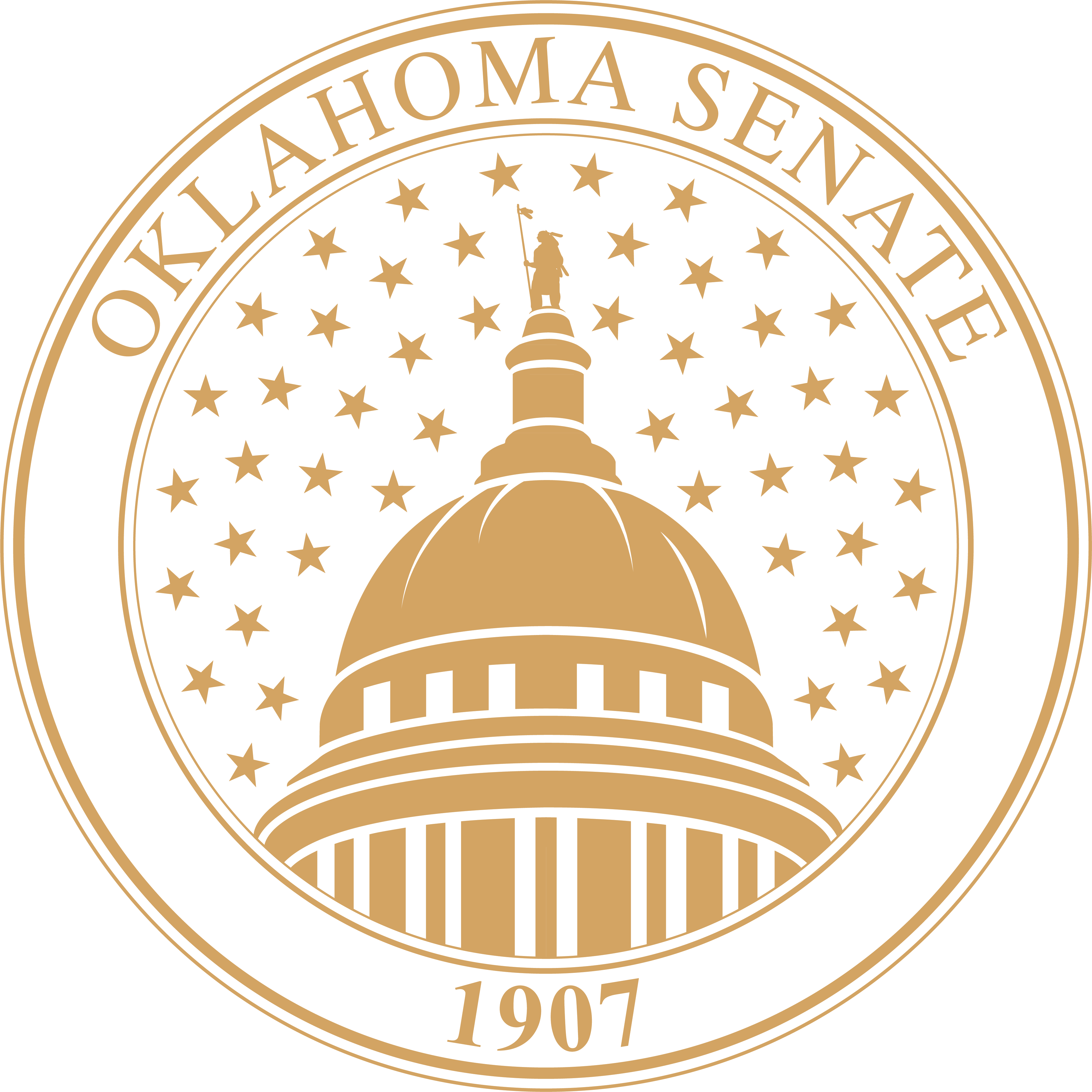In order to provide equal access and equal opportunity to people with diverse abilities, this site has been designed with accessibility in mind. Click here to view
Legislators Welcome Red River Boundary Lines
OKLAHOMA CITY - Oklahoma and Texas may soon have a rock-solid answer to what is Sooner soil and what belongs to the Lone Star state. The battle that has ensued for years is closer to resolution than ever before, following a cooperative effort by the Oklahoma and Texas state legislatures.
Texas Governor George W. Bush signed the Texas legislation defining the Texas/Oklahoma border yesterday and similar legislation is in Oklahoma Governor Frank Keating's hands today. The bill passed unanimously in the Oklahoma House of Representatives earlier this week and received little opposition in the Senate. It is now headed to Governor Keating's desk.
Under the agreement, the boundary between the two states is defined as the vegetation line on the south bank of the Red River, stretching from the Arkansas/Oklahoma line to the Texas panhandle, except for the Texoma area, where the boundary will not change. The compact provides that the states will prepare a map of the boundaries within the Texoma area and make the boundaries such that they may be identified.
Senator Jeff Rabon, D- Hugo carried SB 175 through the Oklahoma Senate and is encouraged to see a conclusion on this issue after almost 200 years.
"This has been an issue that has plagued both Oklahoma and Texas for many years," said Senator Rabon. "By using the vegetation line, we have a practical and economically-sound solution to the problem."
Bill Abney, chairman of the Texas Red River Boundary Commission, maintains this boundary is workable, as it is clear and precise to everyone involved, which would explain how Texas Representative Tom Ramsay, D- Mt. Vernon and Senator Tom Haywood, R- Wichita Falls, carried the measure so enthusiastically.
"When we say 'vegetation line,' people know what we mean. It's easier to grasp than the 'gradient method' of surveying and moreover, it's a natural boundary," said Abney. "The line will always be there and it doesn't require a lawyer or a surveyor to locate. It's a solution that's free and requires no maintenance."
Opponents questioned why it was necessary to address this issue, maintaining that one state may be shortchanged some of its land, but supporters say it simplifies the jurisdictions in an area that was muddied in the past. Even though the vegetation line may shift, everyone will be able to see where it shifts, including farmers, law enforcement and tax commissions.
"This is a great step forward for citizens of the Red River Valley and I think it's an agreement we can all be proud of," said Senator Haywood. "We have worked on this concept for a number of years and we are looking forward to working with Oklahoma to implement the compact for the good of their state as well as our own."
Critics have expressed concerns that Oklahoma stands to lose land in the agreement, but no evidence has been presented to prove the claim. Oklahoma House author Representative David Braddock, D-Altus, maintains the statements are unsupported.
"The fear that Oklahoma will lose land in this agreement is unfounded," said Representative Braddock. "In fact, the vegetation line in most cases is within a few feet of the actual boundary and thus, land loss claims are unsubstantiated."
Although Governor Keating has yet to sign the bill, the legislature expects his willing signature.
"This means great things for Oklahoma and Texas," said Senator Rabon. "From historical, practical and economic standpoints, this is an excellent solution to our boundary situation."
The measure still needs a congressional stamp of approval.
- 30 - Oklahoma Senate
Oklahoma Senate

